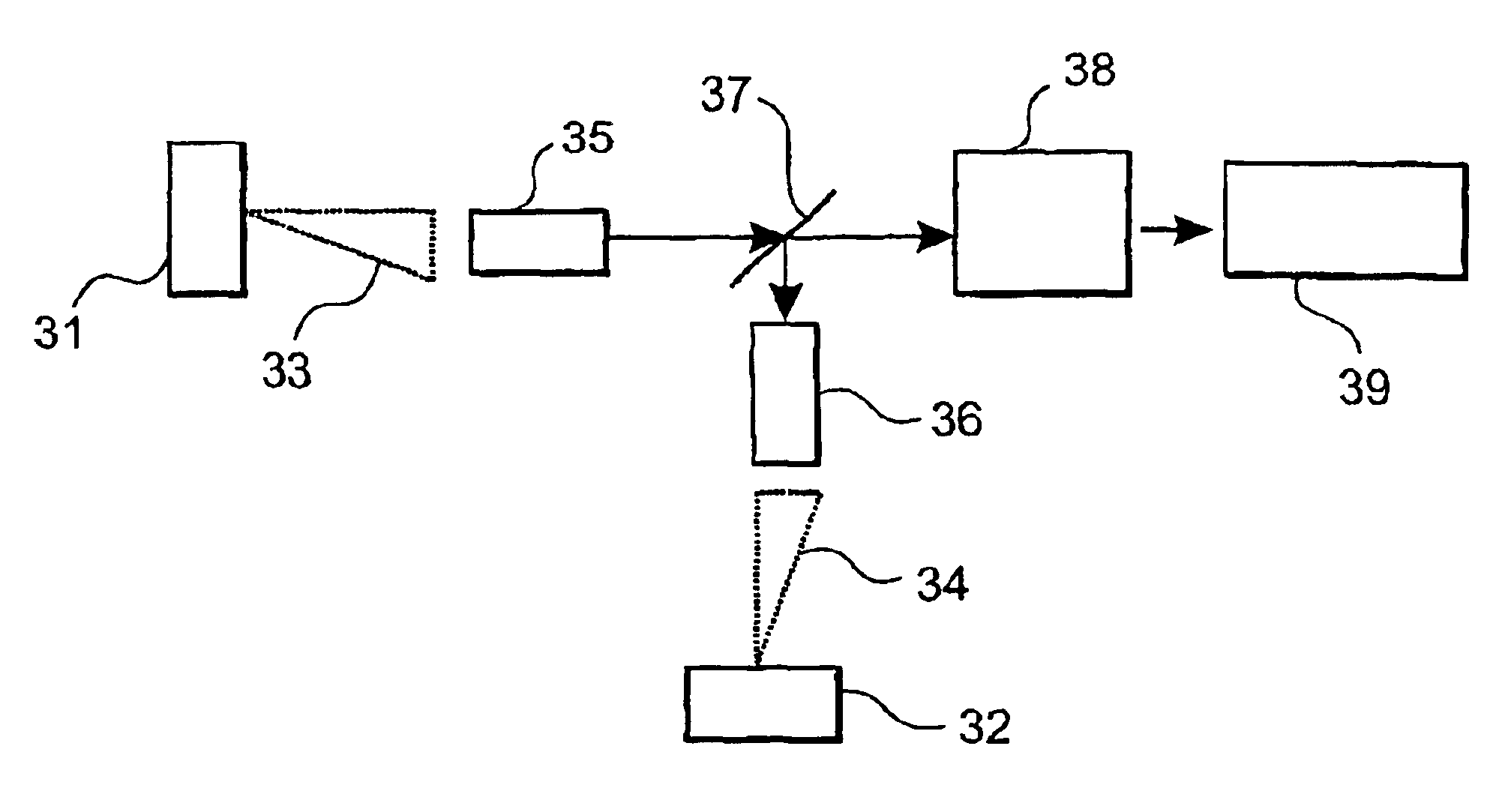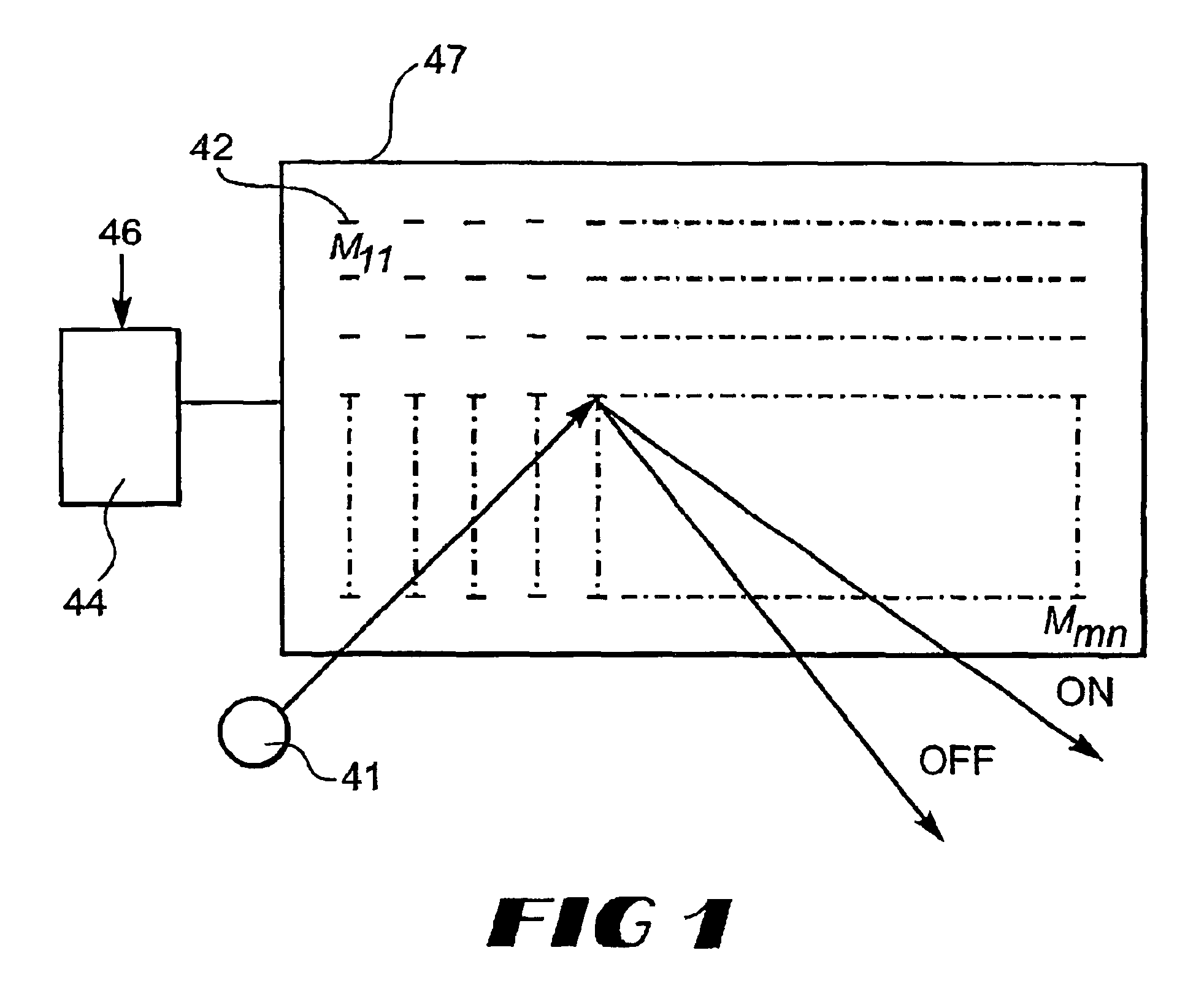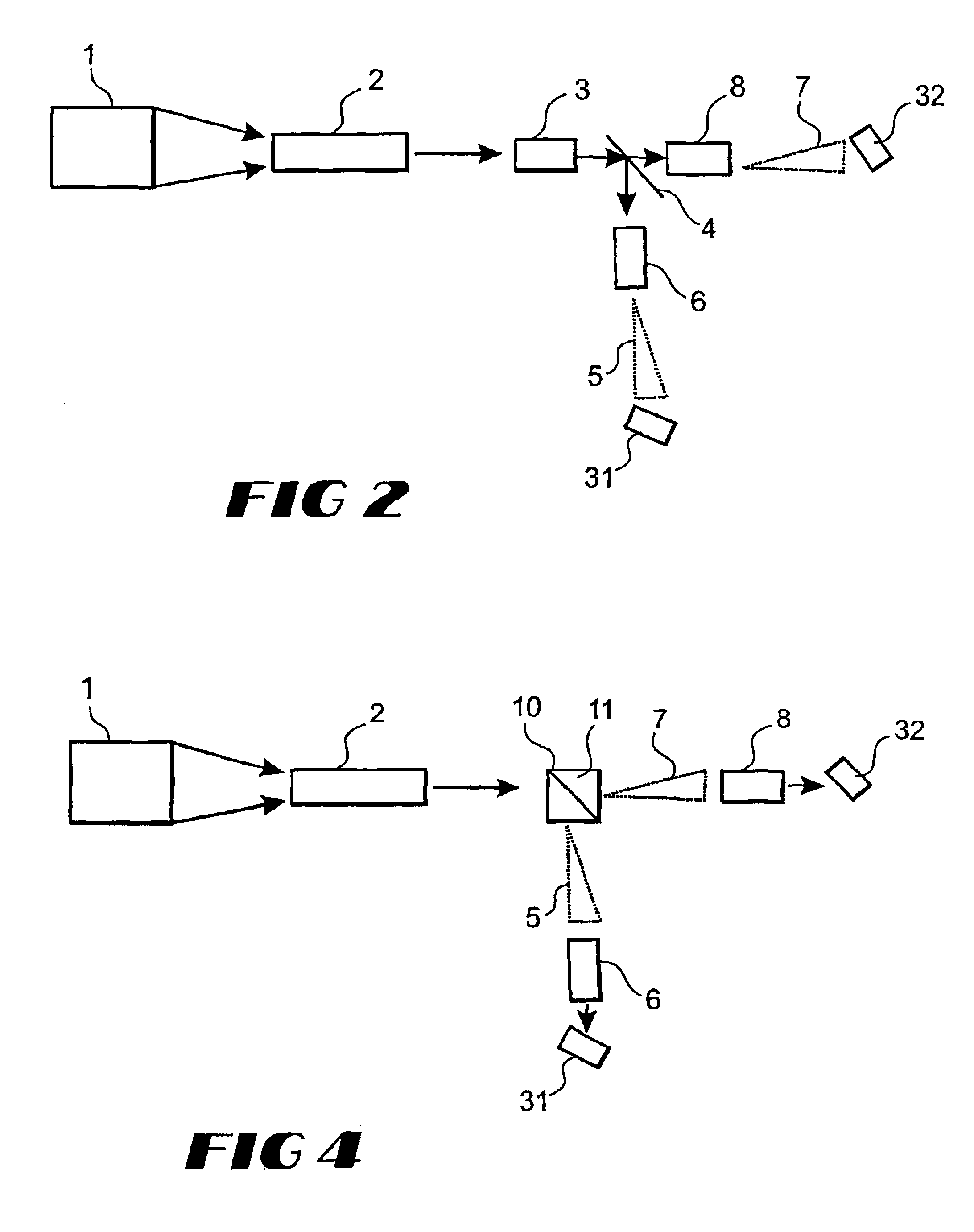Methods and systems for low loss separation and combination of light
a technology of light separation and light combination, applied in the field of image projection, can solve the problems of prohibitively high hardware requirements for high resolution, prohibitive to display high resolution images using conventional electronic projectors, and achieve the effect of increasing the effective resolution of the projection apparatus
- Summary
- Abstract
- Description
- Claims
- Application Information
AI Technical Summary
Benefits of technology
Problems solved by technology
Method used
Image
Examples
Embodiment Construction
[0025]Referring first to FIG. 1, there is illustrated a spatial light modulator (SLM) 47 having an M×N array of pixels 42 arranged in rows and columns. A light beam 41 is directed at the SLM 47 and light is reflected off or transmitted by the pixels 42 in an ON direction or an OFF direction. SLM 47 could be a deformable mirror device (DMD), such as that sold by Texas Instruments, in which each of the pixels is actually a micro-steerable mirror that can be toggled between an off-state and an on-state in rapid succession, as is necessary to display an image on a projection screen. SLM 47 is connected to a driver circuit 44 that receives an electronic signal from a control circuit indicated generally as 46 and addresses each of the pixels. Alternatively, SLM 47 could be a liquid crystal array.
[0026]In FIG. 2, light produced by a projection lamp 1 is directed toward a rectangular integrating bar 2, which serves the purpose of providing a beam of light with a rectangular profile matching...
PUM
 Login to View More
Login to View More Abstract
Description
Claims
Application Information
 Login to View More
Login to View More - R&D
- Intellectual Property
- Life Sciences
- Materials
- Tech Scout
- Unparalleled Data Quality
- Higher Quality Content
- 60% Fewer Hallucinations
Browse by: Latest US Patents, China's latest patents, Technical Efficacy Thesaurus, Application Domain, Technology Topic, Popular Technical Reports.
© 2025 PatSnap. All rights reserved.Legal|Privacy policy|Modern Slavery Act Transparency Statement|Sitemap|About US| Contact US: help@patsnap.com



